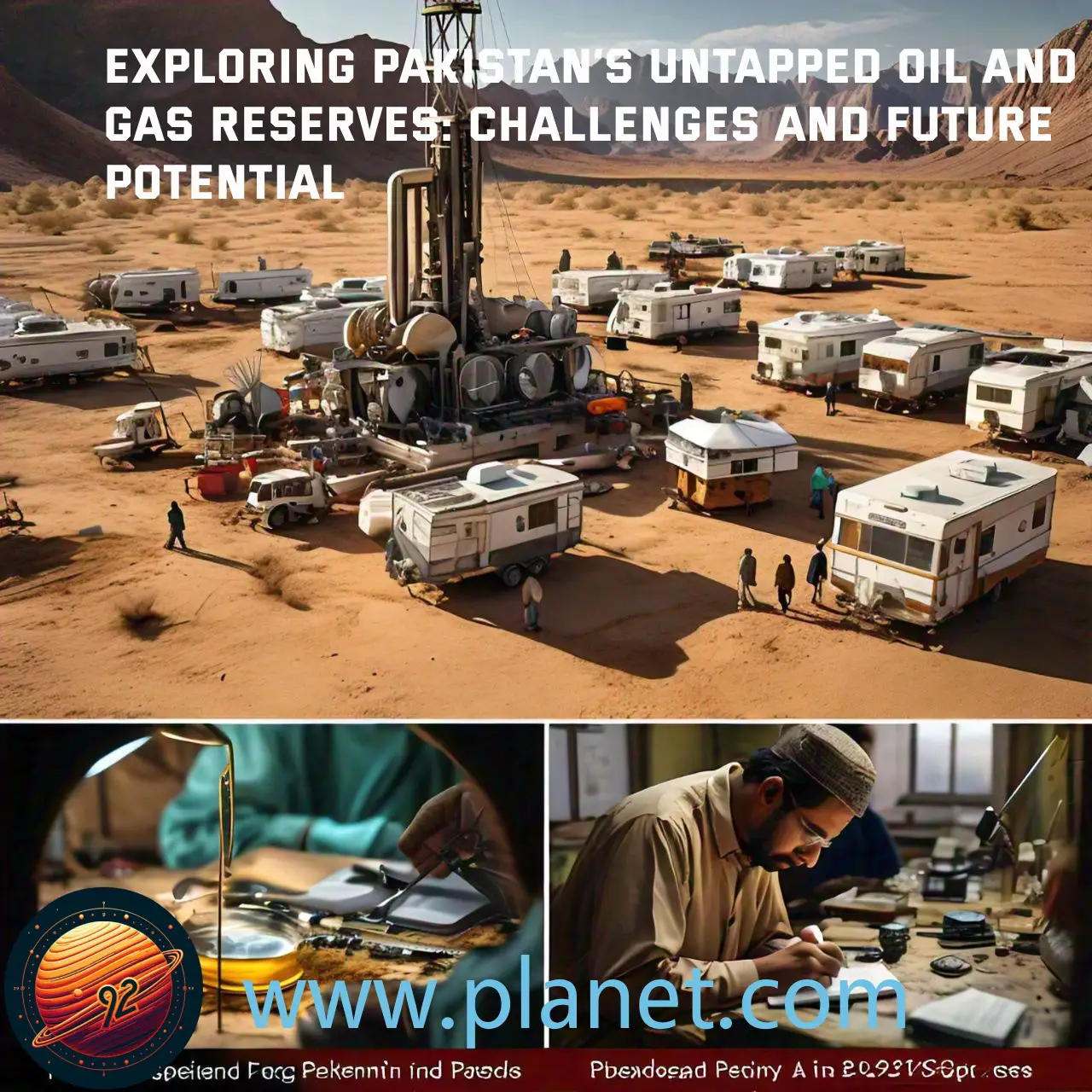Oil and Gas Reserves in Pakistan: Current Status and Future Potential
1. Overview of Pakistan’s Oil and Gas Reserves
Pakistan, a country rich in natural resources, holds significant potential in oil and gas reserves. Despite having vast deposits, particularly in Sindh, Balochistan, Khyber Pakhtunkhwa (KPK), and Punjab, Pakistan has struggled to tap into its full energy potential. Political instability, security issues, underdeveloped infrastructure, and global economic influences have hampered exploration efforts. Additionally, international players, regional competition, and internal inefficiencies have further complicated Pakistan’s quest for energy self-sufficiency. As energy needs grow, understanding the true potential of Pakistan’s reserves becomes even more critical.
This article delves into the importance of Pakistan’s reserves, the regional dynamics affecting their exploration, and how the country could benefit from unlocking this immense potential in a global energy market in flux. Additionally, it analyzes how these natural reserves could reshape the nation’s economic landscape if utilized properly, shedding light on the geopolitical and regional challenges that stand in the way of full exploitation.
- Proven Oil Reserves: Pakistan has approximately 27 million barrels of proven oil reserves.
- Proven Gas Reserves: The country holds around 19.5 trillion cubic feet (TCF) of proven natural gas reserves, with much more potential in untapped areas.
- Key Areas: The primary oil-producing areas are in the Potohar region (Punjab), while Sindh and Balochistan are rich in gas reserves.
2. Area-wise Breakdown of Reserves
- Sindh:
Sindh is the largest contributor to Pakistan’s natural gas production, contributing about 63% of the total gas supply. Fields like Sui (Balochistan’s proximity), Qadirpur, and Mari in Sindh are major sources. - Balochistan:
Balochistan’s Sui Gas Field alone holds around 7 TCF of gas reserves. The province has tremendous potential, but security concerns, lack of infrastructure, and political instability hinder exploration. - Khyber Pakhtunkhwa (KPK):
KPK produces about 9.8% of the country’s gas and 26% of its oil, with fields like Mela and Makori in Kohat contributing to the output. - Punjab:
Punjab holds smaller fields like Adhi and Dhodak, contributing modest amounts to the oil and gas supply.
3. Total Value of Reserves
The total economic value of Pakistan’s oil and gas reserves is estimated to be in the range of $500 billion. If fully tapped, these resources could revolutionize the energy sector and reduce reliance on costly imports.
4. Challenges in Exploration and Exploitation
Despite these resources, Pakistan is facing significant hurdles in fully exploring its potential:
- Political Instability:
Areas with the most significant reserves, like Balochistan, are riddled with political unrest. Insurgent movements, tribal conflicts, and separatist sentiments have delayed major exploration projects. - Security Concerns:
Particularly in Balochistan, where separatist groups oppose federal control over resources. The Sui gas field is heavily militarized to protect infrastructure from attacks. - Investment Shortfall:
Due to political risk and corruption, foreign investment in the sector has been tepid. Multinational companies are wary of committing capital in volatile areas. - Energy Policies and Bureaucratic Hurdles:
Fluctuating policies, bureaucratic inefficiencies, and slow approval processes deter both local and international exploration companies from investing.
5. Theories and Conspiracies: Why Pakistan Isn’t Fully Exploiting Reserves?
- International Interests:
Some argue that global powers, particularly the U.S. and neighboring countries like India, prefer Pakistan to remain dependent on imports to maintain economic leverage. There are claims that regional powers may actively work to delay energy independence for strategic reasons. - Geopolitical Dynamics:
Pakistan’s reliance on the IMF and World Bank, both heavily influenced by Western powers, is seen by some as a tool to ensure that Pakistan remains economically dependent, thus hindering aggressive exploration. - Internal Corruption:
Corruption within Pakistan’s energy sector and government adds another layer of difficulty. Alleged mismanagement of contracts, inflated project costs, and underreporting of reserve data have hampered progress.
6. Global Influence and Interest
- China’s Role:
Through the China-Pakistan Economic Corridor (CPEC), China has shown immense interest in tapping Pakistan’s natural resources. Chinese companies have secured several exploration contracts, especially in Balochistan and Sindh. - U.S. and European Oil Majors:
Western oil majors like ExxonMobil and BP have expressed interest in Pakistan’s reserves but are cautious due to the unstable political climate. - Regional Competition:
Iran and Qatar are major players in the region’s energy market, and they would benefit from Pakistan’s inability to fully develop its gas fields. A self-sufficient Pakistan could pose economic challenges to their export dominance.
7. Fact Sheet
- Total Oil Reserves: 27 million barrels.
- Total Gas Reserves: 19.5 trillion cubic feet (TCF).
- Top Gas Producing Provinces: Sindh (63%), Balochistan (19%), KPK (10%).
- Top Oil Producing Areas: Potohar Region (Punjab), Kohat (KPK).
- Largest Fields: Sui Gas Field, Qadirpur, Mari, Adhi.
8. Potential Future Developments
- Balochistan Exploration:
Should political stability improve, the untapped reserves in Balochistan could fuel Pakistan’s economy for decades. - LNG Imports:
Pakistan has been relying on LNG (Liquefied Natural Gas) imports from Qatar and other suppliers to meet its shortfall. However, if local production is ramped up, imports could be reduced drastically. - Energy Independence:
With strategic partnerships and improved governance, Pakistan could significantly reduce its dependence on imported oil and gas, saving billions annually.
9. Concluding Thoughts
Pakistan stands at a crossroads with its vast oil and gas reserves, possessing the potential to transform its economic landscape and ensure energy security for decades. However, unlocking this potential requires overcoming significant hurdles, including political instability, security concerns, and external pressures from regional powers. By investing in modern exploration technologies, strengthening policy frameworks, and addressing both internal and external challenges, Pakistan can take meaningful steps towards energy independence. The success of these efforts will not only stabilize the nation’s economy but also shift the geopolitical dynamics in South Asia and beyond.
Additionally, global energy markets are evolving, and as Pakistan competes to develop its resources, it must stay aware of the broader geopolitical landscape and ensure that its energy policy serves national interests. The key question remains: can Pakistan overcome both internal inefficiencies and external interferences to become a leading energy producer in the region? The future of its economy and energy security hinges on this delicate balance.








